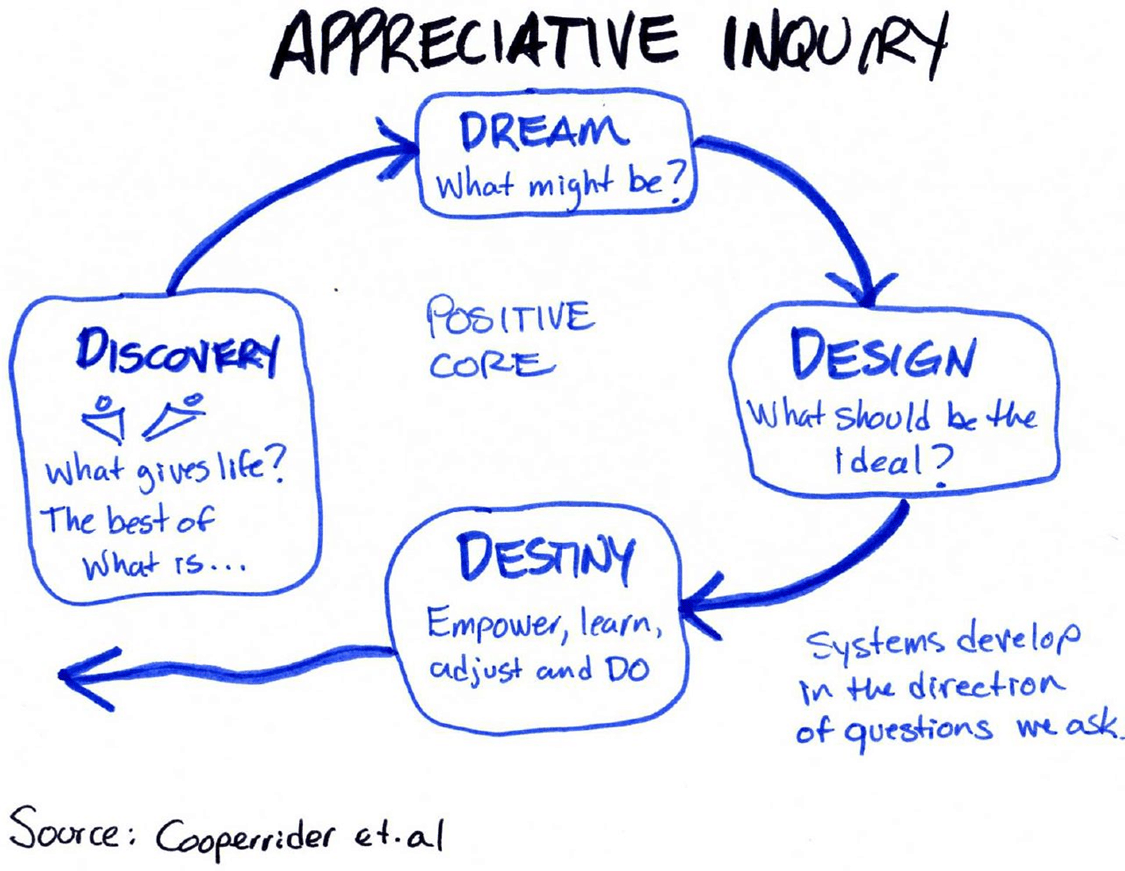Change Management: Two Core Methods

A new study has highlighted two core methods of change management that help to facilitate organisational change whilst improving engagement, ownership and develops learning capability across the organisation.
One of the earliest lessons taught to military officers usually is ‘First, appreciate the situation’. In the fog of war, a good understanding of the immediate situation is core to helping you work out how you might be able to turn the situation to your advantage and complete the mission.
While most leaders don’t have to send their peers into life threatening situations for the survival of the team as a whole, the lesson can be applied throughout organisational leadership, regardless of the job you are doing.
A paper just published in the International Journal of HRD Practice, Policy and Research looked at the role of Appreciative Inquiry and Positive Action Learning in change management.
The paper looks at these two core methods of change management – Appreciative Inquiry and Positive Action Learning and argues that together they are robust and very useful tools for leading an organisation, particularly in uncertain situations and further that if deployed in an organisation can help to create organisational cultural change.
Be impressively well-informed
Get your FREE organizational and people development research briefings, infographics, video research briefings, a free copy of The Oxford Review and more...
Appreciative Inquiry
Appreciative Inquiry is based on the understanding that the questions we ask of a situation tend to focus our attention and thinking in a particular direction. For example, viewing something as a problem assumes that the situation is negative and needs to be changed or fixed. Previous research has found that excessive focus within an organisation on dysfunctions or problems for example can actually cause the situation to become worse or fail to become better.
The underlying principle of Appreciative Inquiry is that when all members of an organisation are motivated to understand and value the most favourable features of the situation then they are more likely to make better improvements. Appreciative Inquiry is what is known as a strength-based methodology and can be used in the creation of organisational development strategies and the implementation of tactics to develop organisational effectiveness without throwing the baby out with the bath water.
Appreciative Inquiry is a cycle that amounts to a feedback loop.
Discovery involves speaking to and listening to staff about the challenges and successes that they face from their points of view. In gathering their stories commonalities can be discovered and the organisation can find what is working and what needs to be changed to make it work.
The dreaming phase involves accepting what is going right and using those, as well as the challenges discovered to feed into the design phase.
The design phase is where the organisation crafts a response to change and make the areas that aren’t working so well better.
The delivery phase is the process of implementation as a test to see what works and what doesn’t.
As the cycle never ceases, it turns into a continuous improvement process from a positive perspective.
The point here is that the leadership, managers and employees conduct the appreciative cycle together, rather than its being done to them.
Positive Action Learning
Positive Action Learning takes Appreciative Inquiry and uses it on the ground.
Action learning is simply a process of testing and learning. Try something, observe, feedback and change until you have the desired result in tight and fast iterations of learning.
The paper reports on the application of Positive Action Learning in an unnamed major company with 2,200 staff that was facing a sharp fall in business.
In this situation the process was applied in the following way:
- Share best practice and process understanding across the organisation through building effective knowledge management networks like communities of practice.
- Swap logistics people into manufacturing.
- Build a culture of networking: e.g. cross functional workshops: share specialist skill sets.
- Practice empowerment: allow different decisions to be made and adopt a true coaching culture.
- Learn from other businesses / areas.
- Consistency in communication messages:- How are we performing and what can I do? Acting on decisions quickly.
- Celebrate success and recognise people: little treats and thank yous / individuals and teams.
- Honesty: tell it how it is and enable individuals to rise to the challenges.
- Simplify: give it a go. Break the process to ensure lean / speed. Be less of a perfectionist culture.
- Alignment and detail: clear accountability from the exec down.”
This went through three cycles and led to the business maintaining its (reduced) market share and no longer having to shed staff to remain profitable. They are now using the same process to increase their market share and grow.
Conclusions
These two core methods of change management have been shown to be useful in helping organisational change but in doing so increases engagement, ownership and develops learning capability across the organisation.
One of the points the researchers make is that leaders really need to start from the point of admitting that they don’t really know everything that is what going on in the organisation and then appreciating what they do find. Only by listening to all participants can one fully understand the what is happening and appreciative inquiry and positive action learning turns the whole process into a positive experience for all concerned and places an emphasis on learning rather than knowing, which is much more adaptable and explorative.
You may also like: Is the change curve a myth or reality? The research evidence.
Reference
Available to members
Be impressively well informed

Get the very latest research intelligence briefings, video research briefings, infographics and more sent direct to you as they are published
Be the most impressively well-informed and up-to-date person around...



Great summary – can you give me the name of the author(s) please? I’d like to get in touch…